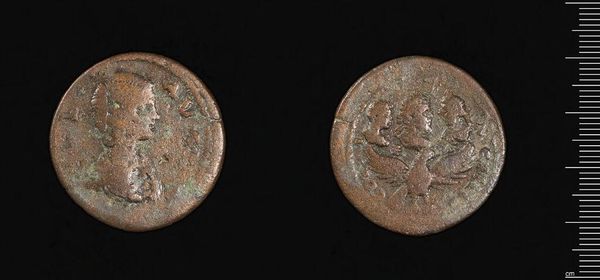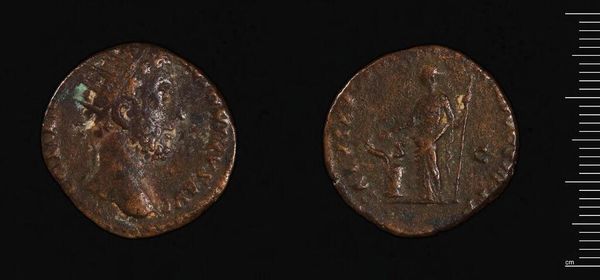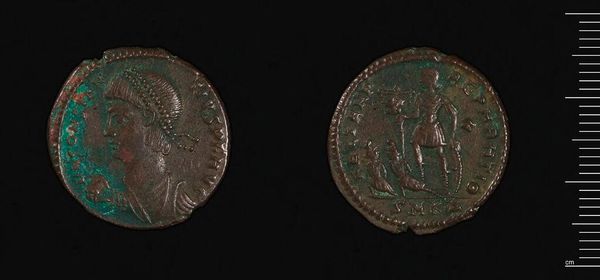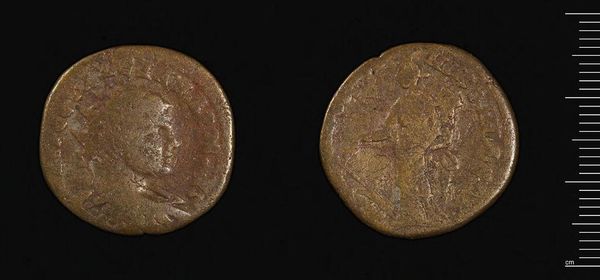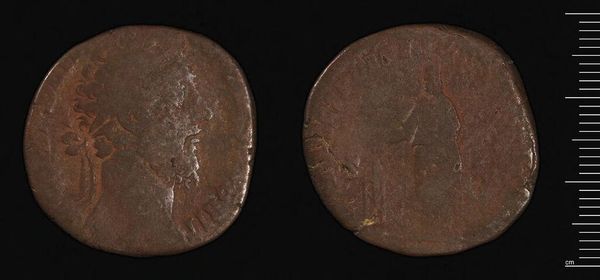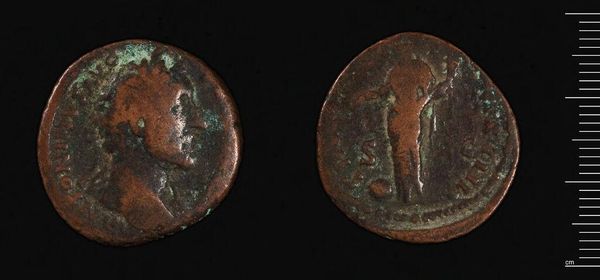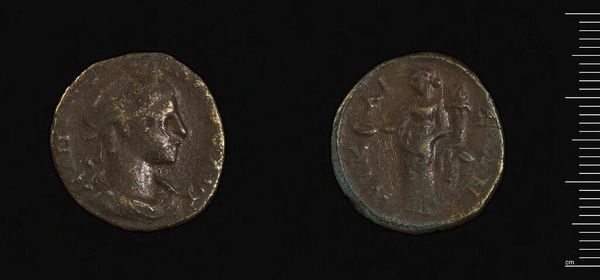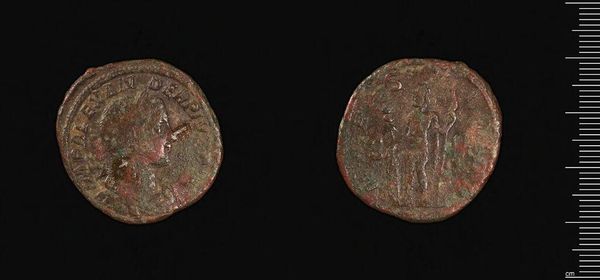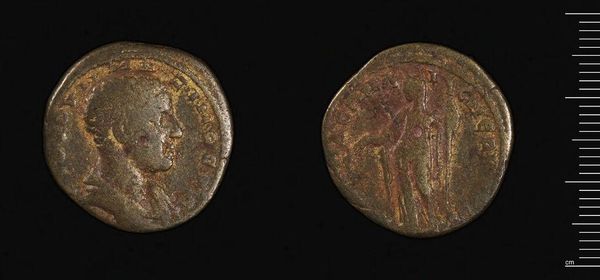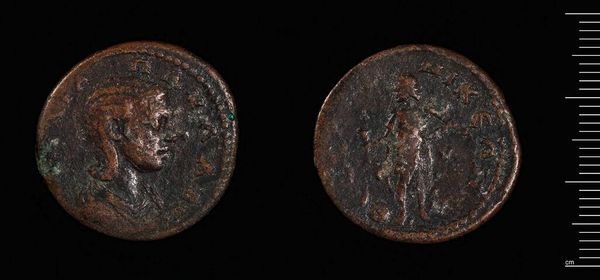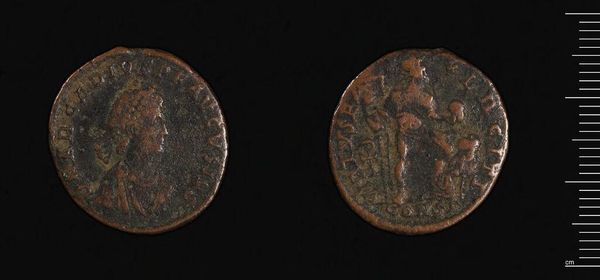
Dimensions: 8.37 g
Copyright: CC0 1.0
Curator: Well, here we have a Coin of Istros under Elagabalus, residing in the Harvard Art Museums. It's a rather unassuming bronze piece, weighing in at just 8.37 grams. Editor: It looks… weather-beaten. Like it’s carrying the weight of centuries, but stubbornly surviving. I wonder what stories it could tell. Curator: Its survival is quite remarkable, considering it was struck during the reign of Elagabalus. The obverse likely shows a portrait of the emperor. The reverse depicts figures, perhaps deities relevant to Istros, a city with Greek and Roman ties. Editor: Oh, I see them now – barely discernible. They’re like shadows, impressions of belief. Bronze, though… it’s so grounding, almost like a refusal to be ephemeral, despite the subject matter. Curator: Indeed, the choice of bronze connects it to the everyday, to trade and civic life, while the imagery speaks to power and the divine. A potent combination. Editor: Exactly! A tiny, tangible representation of a whole world of power, religion, and trade. I love that. Curator: It really invites us to think about how ancient rulers sought to immortalize themselves through these humble objects. Editor: It's incredible how something so small can ignite so much contemplation, don't you think?
Comments
No comments
Be the first to comment and join the conversation on the ultimate creative platform.
